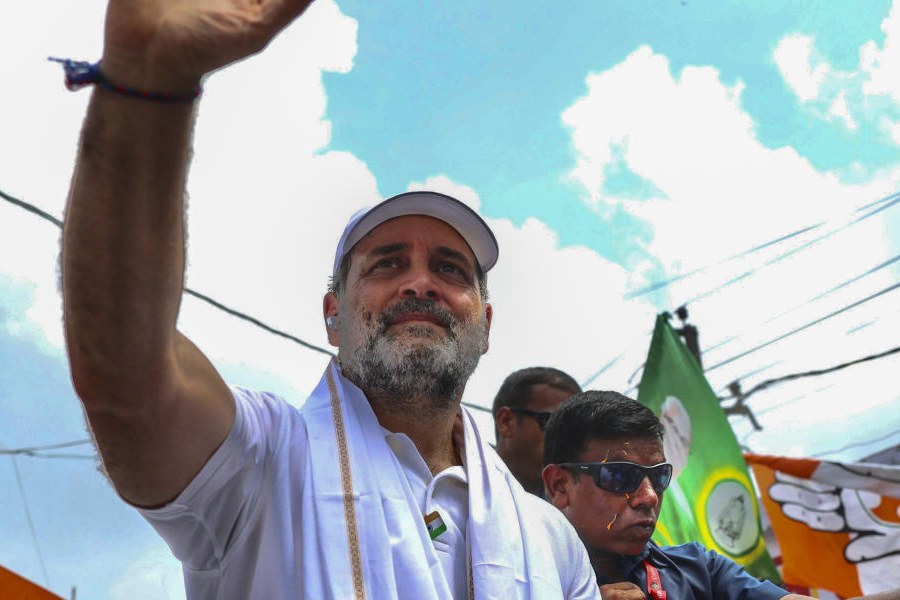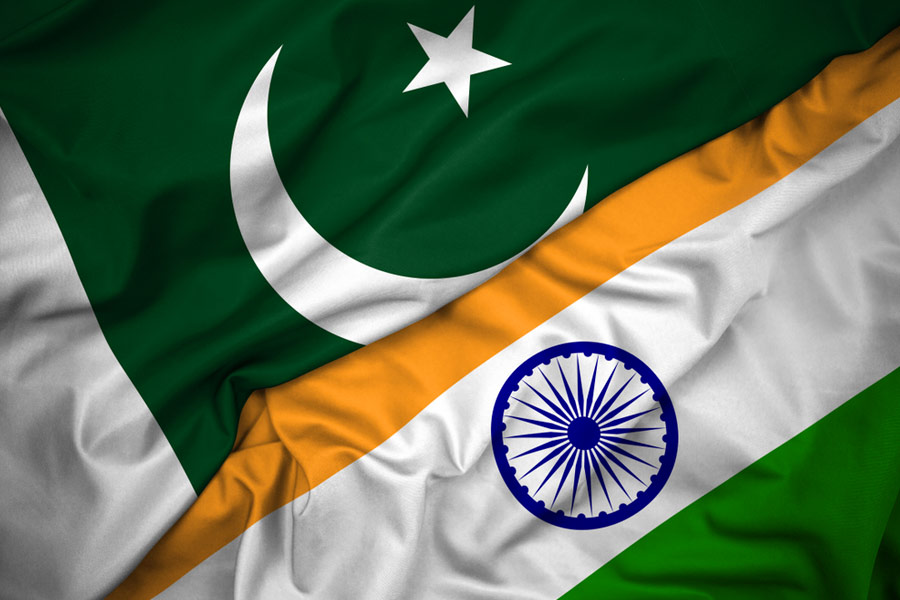|
|
| Carrying forward the legacy |
Young artistes dominated the night-long Sabrang Sangeet Sammelan at Kala Mandir on December 19. The festival and Sabrang Music Trust, which organizes it to commemorate Ustad Bade Ghulam Ali Khan and raise funds for free medical service to aged musicians, are both named after the Ustad’s nom de plume — sab rang (all colours). Mira Bhattacharjee, wife of the chief minister, Buddhadeb Bhattacharjee, ceremonially opened the night-long festival and then presented a cheque of Rs 2,05,000 on behalf of the Trust to Rupali Maulik, general secretary of Matrisangha Janakalyan Ashram that provides the service to aged musicians at its medical wing.
Among the young performers was Kaushiki Desikan, whose recital was the third of the night. Singing khayals in raga Malkauns in the grand style originating from Bade Ghulam Ali Khan, she paid a fitting tribute to the Ustad. The vilambit khayal, based on the Sabrang composition, Koyelia boley, opened with movements structured in the masterly Bade Ghulam style. There were the classic undulating bahlawa patterns, laced with the subtle downward glides typical of the Ustad. After striking the taar saptak sadaj (tonic) for the first time, Kaushiki unleashed a fast taan that carried the mukhra on its tail: practically a Bade Ghulam signature!
The antara elaboration was decorated with fast sargam patterns, including those changing the tonic to traverse other major pentatonic ragas, but staying within the Malkauns ambit. This is another Bade Ghulam speciality cultivated and passed on to Kaushiki by her father and guru, Ajoy Chakraborty. In this section there were sweeping taans that reached the ati tar sadaj and returned from it without sounding too shrill. There were excellent fast bol-taans structured in the Ustad’s style in drut khayal, which too is a classic Sabrang composition. There were fast sargam taans in the faster drut khayal (also a Bade Ghulam Ali composition) in the manner of her father. These ended with lightning sapat taans.
Kaushiki went on to sing brief but pleasing madhya vilambit ektal and drut ektal khayals in raga Abhogi and ended with a dadra in Mishra Pahadi. Abhijit Banerjee (tabla) and Rupashree Bhattacharya (harmonium) provided her with excellent support.
The first recital of the night was by young Ambarish Das, who has training from Mashkoor Ali Khan, Rashid Khan and the late Kumar Prasad Mukherji. He developed his vilambit khayal in Bageshri steadily and tunefully. His taankari, though tuneful, needs more cultivation and development. This was more apparent in his drut ektal khayal. He went on to sing a classic drut khayal in Barwa.
The second recital was a tabla trio in teental by the renowned maestro, Swapan Chaudhuri, his nephew, Saikat Chaudhuri, and son, Nilanjan Chaudhuri. Starting with utthan and theka variations, the maestro led the youngsters into quaida, rela and classic Lucknow gharana compositions. The solo, alternately duet, and finally trio tabla-playing maintained high standards and thrilled the appreciative audience. Sanatan Goswami played the naghma with expertise on the harmonium.
After Kaushiki Desikan’s spellbinding recital came the performance by the Shastriya Syndicate, an ensemble conceived by young sitar player, Purbayan Chatterjee. Other than Purbayan himself on sitar, it had Jayanthi Kumaresh on the Carnatic veena, Rakesh Chaurasia (nephew of Hariprasad Chaurasia) on the flute, Subhankar Banerjee on the tabla and Pramath Kiran, the multi-percussionist. Displaying a high level of collaboration, these talented young instrumentalists opened with a piece titled “Midnight Meditations” in raga Charukeshi (aochar, jod and dhamar gatkari) and went on to play “Leher” (fast rhythms and jhala in raga Desh in drut teental), “Avartan” (tabla and percussion duet in adi talam) and “Journey Within” (folk-based variations in Mishra Pahadi in dadra tala). Purbayan, Jayanthi and Rakesh played their alternate and combined roles with rare skill and understanding throughout. Shubhankar, who at times played a low-pitched tabla in the manner of both the pakhawaj and the mridangam, was extremely impressive. So was the usually low-key but judicious inputs of a variety of percussion sounds by Pramath Kiran.
The night-long festival ended with khayals in raga Basant Mukhari by senior vocalist Pandit Manas Chakraborty. The slow phrase elaboration in the ektal vilambit was steady but rather routine for the most part. But it warmed up with some vigorous taankari and sargams with expert response from Samar Saha on the tabla in the final part. The medium tempo ada choutal composition and the drut teental khayal (especially the last) featured some good taankari that evoked forceful a response from Saha. He ended with a thumri in Bhairavi.











